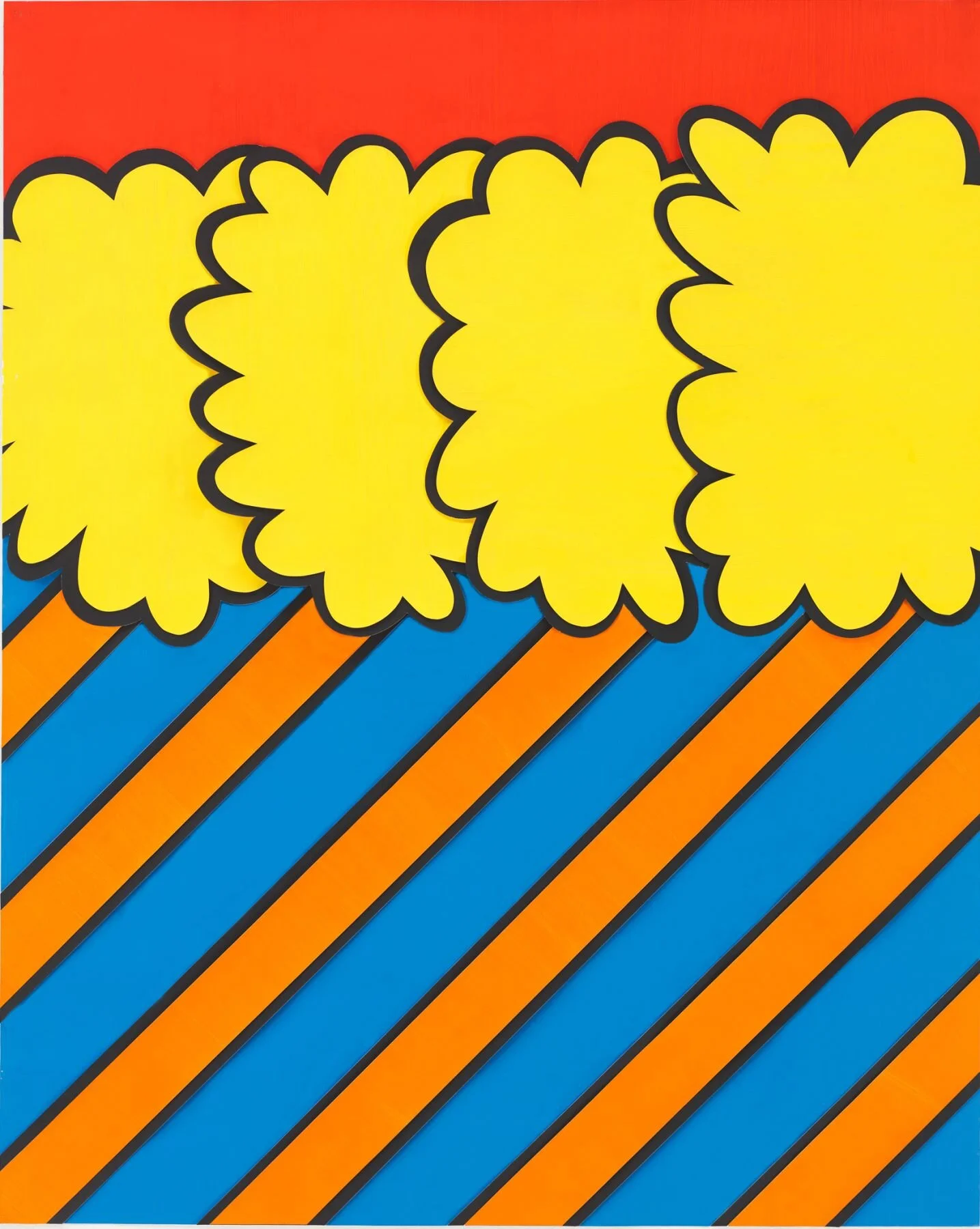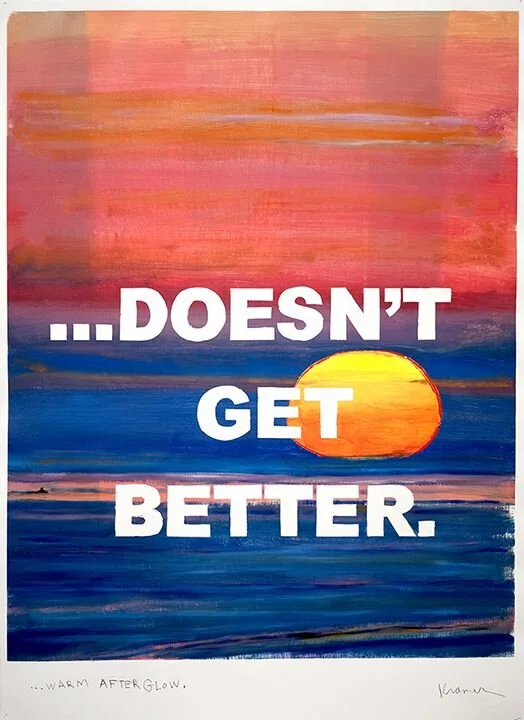Nicholas Krushenick
“Collage”
New York, 545 West 20th Street
A formative medium for the artist, collage enabled Krushenick to establish a visual vocabulary that formed the basis for his most iconic works. The bright processed colors, broad black lines, and overlapping, quasi-organicforms that define his later works first appear in these bold, layered, and loosely stapled abstract collages. It was through a selection of collages like these—initially shown at Brata Gallery in 1960—that Krushenick’s contemporaries were first introduced to what would become his mature style.
Untitled (Triptych) (1959) subtly anticipates Krushenick’s iconic “pop abstraction” while demonstrating his playful art historical curiosity. The work’s triptych format and cruciforms recall Christian art of previous centuries. Gestural strokes of earthy green acrylic evoke Abstract Expressionism, but stray drips of paint below the forms reveal the more humorous constituents of that serious green: a mustard yellow, a rusty red, and a dark teal. The three-part collage also reads from left to right as an abstract but slapstick comic stripsequence. In the works that followed, the artist’s resolutely personal stylistic lexicon crystallized.
In Icarus (1965), white, ovoid forms overlap like tail feathers against the collage’s red and blue background. The composition is framed by what resemble sun-yellow cartoon stomach villi. The sharp black contoursdefine each form and seem to intensify each individual color. As before, his work confounded ordinary classification, straddling the lines between Op, Pop, Abstract Expressionism, Minimalism, and Color Field painting. “They don’t know where to place me,” said Krushenick in an interview. “I’m out in left field all by myself. And that’s just where I want to stay.”






